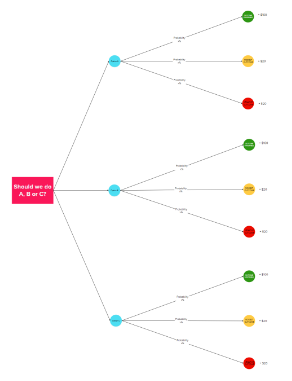12 Solution Design Techniques

A solution design technique is a systematic approach used to create, evaluate, and refine solutions to address specific problems or needs within a business or technical context. These techniques provide structured methodologies, tools, and frameworks to guide the design process and ensure that the resulting solutions are effective, feasible, and aligned with stakeholders' requirements.
Below are the common solution design techniques that can be used to define solutions.
Design Thinking
Design thinking is a human-centered approach to innovation and problem-solving. It involves empathizing with users, defining the problem, ideating potential solutions, prototyping ideas, and testing them iteratively. This technique emphasizes creativity, collaboration, and user-centricity in designing solutions.
User Story Mapping
User story mapping is a technique used in agile software development to visualize and prioritize user requirements. It involves arranging user stories into a hierarchical map based on user activities or workflows. This helps in understanding the user journey and identifying key features and functionalities needed in the solution.

Prototyping
Prototyping involves creating a simplified version of the solution to gather feedback and validate requirements before fully implementing the solution. It helps in visualizing the solution, identifying potential issues early in the development process, and refining the design based on user feedback.
Functional Decomposition
Breaking down complex systems or problems into smaller, manageable components or functions to understand the system's structure, dependencies, and interfaces. This technique involves breaking down complex systems or processes into smaller, more manageable components or functions. It helps in understanding the system's structure and functionality and identifying potential areas for improvement or optimization.
Decision Trees
Decision trees are graphical representations of decision-making processes that help in analyzing various options and their potential outcomes. They are particularly useful for evaluating alternative solutions and selecting the best course of action based on predefined criteria.

Requirements Analysis
Before designing a solution, it's essential to understand and analyze the requirements thoroughly. This involves gathering, documenting, and analyzing stakeholder needs and expectations to ensure that the solution addresses all necessary functionalities and features.
Use Case Modeling
Describing interactions between users (actors) and the system under design to capture functional requirements and define specific scenarios or workflows. Use case modeling is a technique used to describe the interactions between users (actors) and a system to achieve specific goals or tasks. It helps in understanding how users will interact with the system and defining the system's behavior from a user's perspective.

System Architecture Diagrams
Visual representations illustrating the structure, components, and interactions of a system or solution, aiding in communication, understanding, and guiding implementation decisions. System architecture diagrams visually represent the structure, components, and interactions of a system or solution. They depict the relationship between different modules, layers, and components, including hardware, software, and data flows. System architecture diagrams aid in communicating design decisions, understanding system complexity, and guiding implementation.
Architecture Design
Architecture design involves defining the structure, components, and interactions of the solution to ensure that it meets the required functionality, performance, and scalability criteria. It includes designing the system's overall architecture, subsystems, interfaces, and data flow.
Risk Analysis
Risk analysis involves identifying, assessing, and mitigating potential risks and uncertainties associated with the solution design and implementation. It helps in proactively addressing potential issues and minimizing their impact on the project's success.

Feasibility Study
Before proceeding with the solution design, conducting a feasibility study is crucial to assess the viability and practicality of the proposed solution. It involves analyzing various factors such as technical feasibility, economic viability, legal and regulatory compliance, and operational feasibility.

Benchmarking
Benchmarking involves comparing the proposed solution with similar solutions or industry standards to assess its performance, functionality, and effectiveness. It helps in setting performance targets, identifying areas for improvement, and ensuring that the solution meets or exceeds industry benchmarks.
These techniques are essential tools for business analysts, designers, architects, engineers, and other professionals involved in designing and delivering solutions that meet business objectives and user needs effectively. The choice of technique depends on factors such as the nature of the problem, the complexity of the solution, stakeholder preferences, and the specific context of the project.

Question For You!

Stay connected with news and updates!
Join our mailing list to receive the latest news and updates from our team.
Don't worry, your information will not be shared.
We hate SPAM. We will never sell your information, for any reason.

